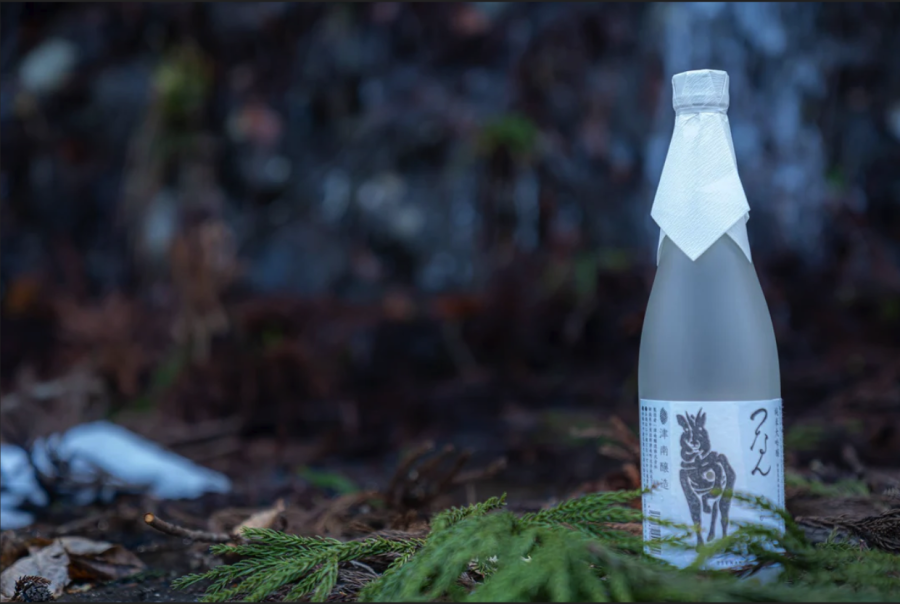Yutaka Nagaia,b,Toshiaki Suzukia, Susumu Yamashitaa, Toshio Johc, Yuji Tasakid,*
aDevelopment and Research Laboratory, Niigata Meijo Co., Ltd., 1-8-39 Toei, Ojiya, Niigata 947-0004, Japan
bGraduate School of Science and Technology, and cDepartment of Applied Biological Chemistry, Faculty of Agriculture, Niigata University, 2-8050 Ikarashi, Nishi-ku, Niigata, Niigata 950-2181, Japan
dDepartment of Materials Engineering, National Institute of Technology, Nagaoka College, 888, Nishikatagai, Nagaoka, Niigata 940-8532, Japan
*Corresponding author:
Y. Tasaki
Tel: +81-258-34-9405
Fax: +81-258-34-9700
E-mail: ytasaki@nagaoka-ct.ac.jp
Text: 10 pages; tables: 1; figures: 1
Abstract
Here, we describe C8-222, a novel cerulenin-resistant strain of Saccharomyces cerevisiae Meijo-9 that encodes a point mutation (FAS2-1253A mutation) resulting in a Gly to Ala substitution at position 1,253 of the fatty acid synthase alpha subunit (Fas2 protein), which was isolated by traditional screening in the presence of cerulenin. Notably, this mutation yielded enhanced production of caprylic acid, but not of caproic acid. As caprylic acid is a precursor of ethyl caprylate, a compound that confers “fruity-flowery” flavors, usage of this mutant may enable the production of new types of sake.
Key words: C8 medium-chain fatty acid, Cerulenin-resistant strain, Fatty acid synthase, Flavor component, Sake yeast
Saccharomyces cerevisiae is a key microorganism in the alcoholic beverage industry that is used, not only as an agent of fermentation, but also as a determinant of flavor. Hence, yeast strains with specific or desirable characteristics are continuously sought after to enhance the quality or manufacturing processes of alcoholic beverages. In regard to flavor, yeast strain K-1801 (Yoshida 2006), which produces high levels of the desirable apple-like flavor component ethyl caproate, is now widely used to produce sake, a Japanese alcoholic beverage. K-1801 was originally isolated as a mutant that exhibited resistance to the antibiotic cerulenin, an inhibitor of fatty acid synthase, via cultivation in the presence of cerulenin (Inokoshi et al. 1994). The elevated levels of ethyl caproate production observed in this strain are likely due to increased synthesis of the precursor caproic acid (hexanoic acid, C6 medium-chain fatty acid). Meanwhile, the cerulenin resistance and elevated levels of caproic acid production exhibited by K-1801 were found to be the result of a point mutation in the fatty acid synthase gene FAS2, resulting in an amino acid substitution (Gly1250Ser, 1250S) at position 1,250 of the fatty acid synthase alpha subunit (Fas2 protein) (Aritomi et al. 2004).
Fungal fatty acid synthase is a heterododecameric complex comprised of six α and six β subunits (a6b6), which are encoded by the genes FAS2 and FAS1, respectively, that catalyzes all steps of fatty acid synthesis. Accordingly, FAS2 has become an important platform for manipulating the fatty acid composition and flavor of sake. However, the mechanism governing elevated caproic acid production in the cerulenin-resistant K-1801 mutant remains unclear. Furthermore, additional cerulenin-resistant yeast strains encoding other mutations in FAS2 have yet to be isolated.
Here, we describe a novel mutation in FAS2 of the sake yeast strain Meijo-9, a diploid yeast originally isolated by the Niigata Meijo Co., Ltd. (Ojiya, Niigata, Japan), which was generated via a mutational screening approach and confirmed to be S. cerevisiae by 26S rDNA sequencing. Briefly, 1 × 106 CFU/plate of the parental yeast strain was cultivated on SD medium [2% glucose, 0.67% Difco yeast nitrogen base without amino acids (Becton Dickinson and Co., Franklin Lakes, NJ, USA) ] containing 1 mg·L-1 cerulenin for 7 d at 30 °C. A total of 72 cerulenin-resistant colonies were then isolated, used to inoculate 10 mL of YPD medium (1% yeast extract, 2% polypeptone, and 2% glucose), and cultivated at 30 °C for 2 d. The concentrations of free fatty acids in the culture supernatant of each strain were preliminarily measured, as described previously (Tomotake et al. 2006). Strain C8-222 exhibited abundant expression of free fatty acids and was therefore selected for further characterization.
Sequencing of the FAS2 gene of C8-222 revealed a novel point mutation (G to C) at nucleotide 3,758 of the FAS2 open reading frame that resulted in a Gly to Ala substitution at residue 1,253 (Gly1253Ala, 1253A) of the Fas2 protein (Fig. 1A). Moreover, only a cytosine-specific peak was detected at the position of this mutation, indicating that the FAS2-1253A mutation was homozygous. The DNA sequence of FAS2 of Meijo-9 has been submitted to the DDBJ nucleotide sequence database under the accession number LC093835.
To analyze the free fatty acids and fatty acid esters produced by the parental and C8-222 mutant strains, each strain was cultivated in 300 mL of koji extract medium at 25 °C for 5 d. The concentrations of free fatty acids in the culture supernatant were measured via gas chromatography (GC), as described previously (de Jong and Badings 1990). Briefly, the GC conditions were as follows: instrument, GC-14B (Shimadzu, Kyoto, Japan); detection, flame ionization; column, InertCap FFAP fused-silica capillary type (0.25 mm I.D. × 15 m; df = 0.25 mm; GL Sciences, Tokyo, Japan); column temperature, 100 °C for 5 min, increased to 240 °C at 10 °C/min, and then held for 20 min; carrier gas, helium at 50 kPa. The free fatty acid composition of the parental and C8-222 mutant strains are shown in Fig. 1B. Notably, while there was no difference in the amount of caproic acid produced by each strain, C8-222 produced markedly higher levels of caprylic acid (octanoic acid, C8 medium-chain fatty acid; 4.24 mg·L-1) than the parental strain (0.91 mg·L-1). Meanwhile, the concentration of ethyl caprylate in the culture supernatant harvested from each strain was measured as described previously (Ina et al. 1990). As expected, C8-222 also produced higher levels of ethyl caprylate levels (2.00 mg·L-1) than the parental strain (0.92 mg·L-1). To the best of our knowledge, this is the first analysis of a FAS2 mutation that selectively increases the synthesis of caprylic acid, a precursor of ethyl caprylate (Ichikawa et al. 1991) that confers “fruity-flowery” flavors to sake (González et al. 2007). Thus, the use of C8-222 may enable the production of sake with a distinct flavor profile.
An in vitro site-directed mutagenesis approach was then utilized to confirm the effect of the Gly1253Ala mutation on the free fatty acid composition of S. cerevisiae. Briefly, plasmid pRSFAS6, which contains a mutated version of FAS2 (FAS2-1250S; (Akada et al. 1999), was obtained from the National Bio-Resource Project (NBRP) of the Ministry of Education, Culture, Sports, Science & Technology (MEXT) of Japan. Specifically, the nucleotide sequence of the FAS2-1250S allele was previously altered from the wild type GGT (Gly) sequence to an AGT (Ser) at codon 1,250. Therefore, the Gly1250Ser mutation in pRSFAS6 was reverted back to the wild-type sequence using a QuikChange II XL Site-Directed Mutagenesis Kit (Agilent Technologies, Santa Clara, CA, USA), thereby generating plasmid pFAS2-1250G-3. The novel Gly1253Ala mutation was then introduced into pFAS2-1250G-3 by in vitro site-directed mutagenesis, yielding plasmid pFAS2-1253A-31. These three plasmids were then delivered into the laboratory S. cerevisiae strain YPH250 (wild-type) using an S. cerevisiae Direct Transformation Kit (Wako Pure Chemical Industries, Ltd., Osaka, Japan), and transformants containing each plasmid were further characterized.
Cerulenin resistance was investigated as described previously (Kotaka et al. 2010), but with some modifications. Briefly, strains were cultivated in 5 mL YPD medium at 30 °C for 2 d. Cells were then harvested, washed with sterilized water, 10-fold serially diluted, spotted onto solid SD medium containing 1 mg·L-1 cerulenin, and incubated at 25 °C for 4 d. Notably, both the NM-C6 and NM-C8 transformants, which expressed the Fas2 Gly1250Ser and Gly1253Ala variants, respectively, but not the wild-type (YPH250) strain or the NM-C transformant, which encoded a wild-type FAS2 gene, exhibited growth in the presence of the antibiotic (Table 1). These results confirm that both the Gly1250Ser and Gly1253Ala mutations confer cerulenin resistance.
Strain YPH250 and three transformants, NM-C, NM-C8, and NM-C6, were cultivated in 300 mL of koji extract medium at 15 °C for 7 d, and the concentrations of free fatty acids in the resulting culture supernatants were measured as described (de Jong and Badings 1990). NM-C8 produced 1.6–2.1-fold more caprylic acid than did YPH250, NM-C, or NM-C6 (Table 1), suggesting that the Gly1253Ala mutation drives the abundant production of caprylic acid.
In this study, we demonstrated that the cerulenin-resistant strain C8-222, which encodes the FAS2-Gly1253Ala allele, exhibits elevated caprylic acid production. The findings presented here indicate that structural changes caused by the Gly1253 mutation, as well as by the Gly1250 mutation, affect the chain length of the fatty acids produced by Fas2 protein. In a previous study, (Akada et al. 1999) constructed strainsencoding Gly1250Ala (1250A; FAS2-1250A) and Gly1250Cys (1250C; FAS2-1250C) mutations in FAS2 and found that increasing the bulk of the side chain of the 1,250th amino acid resulted in increased production of caproic acid. This increased production is assumed to be due to greater inhibition of fatty acid synthesis (i.e., Fas2 enzyme activity) via the increased bulk of the side chain (Aritomi et al. 2004). However, the relationship between Fas2 enzyme activity and Gly1250 and Gly1253 remains unclear. Further structural analysis of Fas2 protein is therefore required to elucidate the mechanism governing the increased production of C6 or C8 fatty acids in yeast.
In summary, we have isolated a cerulenin-resistant yeast strain encoding a novel FAS2 mutation that selectively stimulates production of caprylic acid.Our findings should facilitate further improvement of sake yeasts.
advertisement
Disclosure
The authors declare no conflict of interest. All the experiments undertaken in this study comply with the current laws of Japan.
Acknowledgments
We thank the members of Niigata Prefectural Sake Research Institute for their support and help. In particular, we are grateful to Director Ken-ichi Watanabe for the useful discussions and warm encouragement. We also thank the NBRP of the MEXT, Japan, for providing S. cerevisiae strain YPH250 and the plasmid pRSFAS6.
REFERENCES
Akada R, Matsuo K, Aritomi K, Nishizawa Y, 1999. Construction of recombinant sake yeast containing a dominant FAS2 mutation without extraneous sequences by a two-step gene replacement protocol. Journal of Bioscience and Bioengineering 87: 43–48; http://dx.doi.org/10.1016/S1389-1723(99)80006-1.
Aritomi K, Hirosawa I, Hoshida H, Shiigi M, Nishizawa Y, Kashiwagi S, Akada R, 2004. Self-cloning yeast strains containing novel FAS2 mutations produce a higher amount of ethyl caproate in Japanese sake. Bioscience, Biotechnology, and Biochemistry 68: 206–214; http://dx.doi.org/10.1271/bbb.68.206.
de Jong C, Badings HT, 1990. Determination of free fatty acids in milk and cheese procedures for extraction, clean up, and capillary gas chromatographic analysis. Journal of High Resolution Chromatography 13: 94–98; http://dx.doi.org/10.1002/jhrc.1240130204.
González SS, Gallo L, Climent MD, Barrio E, Querol A, 2007. Enological characterization of natural hybrids from Saccharomyces cerevisiae and S. kudriavzevii. International Journal of Food Microbiology 116: 11–18; http://dx.doi.org/10.1016/j.ijfoodmicro.2006.10.047.
Ichikawa E, Hosokawa N, Hata Y, Abe Y, Suginami K, Imayasu S, 1991. Breeding of a sake yeast with improved ethyl caproate productivity. Agricultural and Biological Chemistry 55: 2153–2154; http://dx.doi.org/10.1080/00021369.1991.10870932.
Ina K, Takasawa R, Yagi A, Ina H, Kishima I, 1990. Isothiocyanates in the stems and the leaves of wasabi (Wasabia japonica Matsum). Nippon Shokuhin Kogyo Gakkaishi 37: 256–260; http://dx.doi.org/10.3136/nskkk1962.37.4_256.
Inokoshi J, Tomoda H, Hashimoto H, Watanabe A, Takeshima H, Ōmura S, 1994. Cerulenin-resistant mutants of Saccharomyces cerevisiae with an altered fatty acid synthase gene. Molecular and General Genetics 244: 90–96; http://dx.doi.org/10.1007/bf00280191.
Kotaka A, Sahara H, Hata Y, 2010. The construction and application of diploid sake yeast with a homozygous mutation in the FAS2 gene. Journal of Bioscience and Bioengineering 110: 675–678; http://dx.doi.org/10.1016/j.jbiosc.2010.07.007.
Tomotake H, Okuyama R, Katagiri M, Fuzita M, Yamato M, Ota F, 2006. Comparison between Holstein cow’s milk and Japanese-Saanen goat’s milk in fatty acid composition, lipid digestibility and protein profile. Bioscience, Biotechnology, and Biochemistry 70: 2771–2774; http://dx.doi.org/10.1271/bbb.60267.
Yoshida K, 2006. Kyoukai sake yeast 1801. Journal of the Brewing Society of Japan 101: 910–922; http://dx.doi.org/10.6013/jbrewsocjapan1988.101.910.
Figure legends
Fig. 1. Identification of a novel mutation in the FAS2 gene of Saccharomyces cerevisiae. A: DNA sequencing of the FAS2 loci of the wild-type sake yeast strain Meijo-9 and the mutant strain C8-222. Arrows mark the G to C mutation at nucleotide 3,758 of the FAS2 open reading frame, and the corresponding Gly to Ala amino acid substitution at codon 1,253. B: Free fatty acid profiles of Meijo-9 and C8-222.
advertisement






